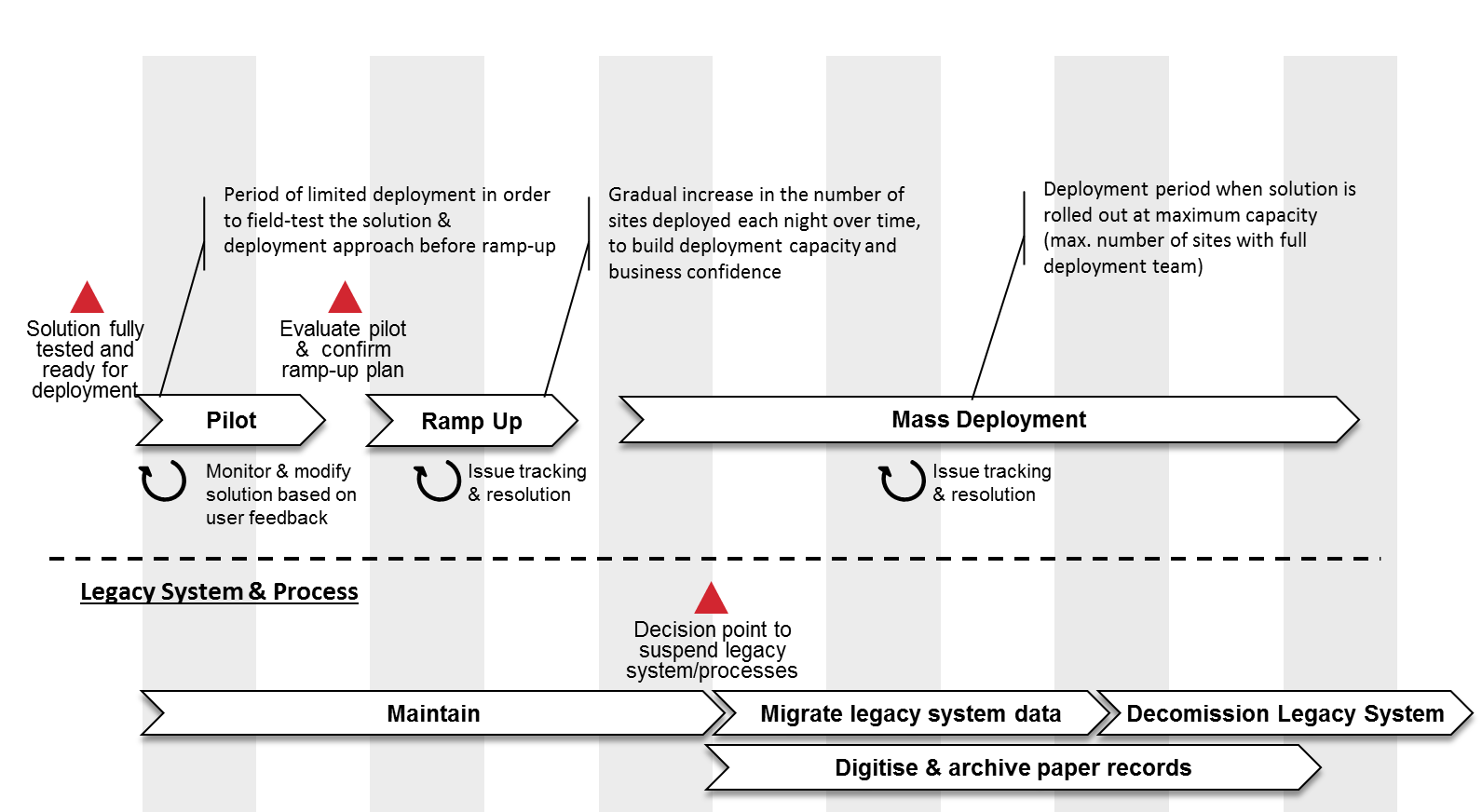Overview
Deployment is the act of introducing a new technical solution/platform and services to an organisation in a coordinated manner. A successful deployment relies on forward planning, adequate resourcing, on-going monitoring and evaluation and strong communications.
Steps:
1
Define deployment approach by completing the Deployment Approach Template, considering:
- Who needs to be part of the deployment team?
- Who/which sites should be deployed to first?
- How is a site deemed “ready for deployment”?
- What tool will be used to track deployments?
- Who will attend the deployment?
- When will the deployment be done? Overnight/during the day/weekend?
- How and when will the CRVS system integrate / interoperability with other systems (as defined in the system architecture)?
- How and when will legacy / historical system data be migrated?
- How and when will legacy vital event records be digitised?
- How long will legacy system and processes by run in parallel to the target system?
- What support will be provided the day after deployment? (Day-1 support)
- How will people raise issues with the application after deployment?
- How will issues be logged, tracked and resolved?
- Who will document lessons learned to continue to inform an effective deployment approach?
2
Identify the required team to implement the deployment approach; onboard these resources onto the CRVS Digitisation Team and ensure that they understand the scope and objectives of the CRVS Digitisation Project
3
Define a phased deployment schedule that calls out key decision points throughout the deployment process and update the Implementation Plan to reflect deployment activities.

High Level CRVS Digitisation Deployment Plan Example
4
Update the Deployment Plan Template to reflect your deployment needs and the key project milestones as defined in the previous step. Include all deployment sites, assigning dates for the pilot as and when they become clear.




